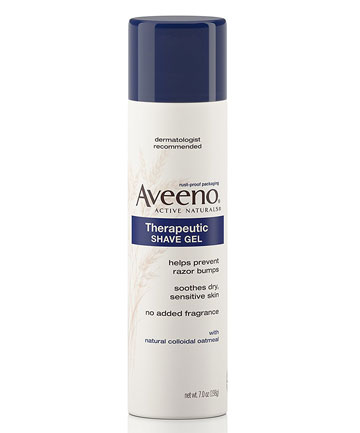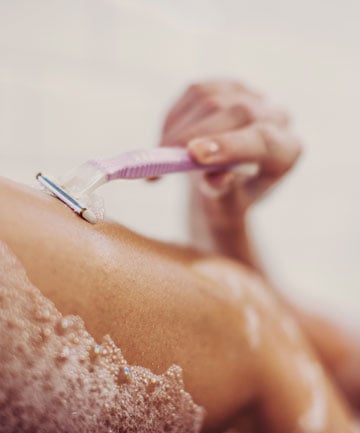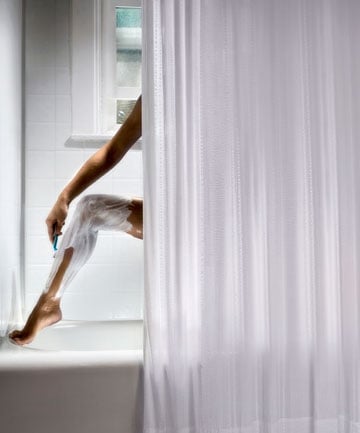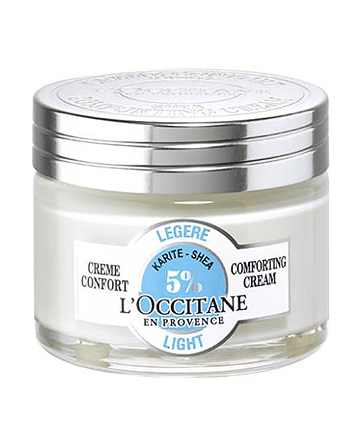Aside from cuts that seem to never stop bleeding, ingrown hairs are one of the peskiest shaving predicaments—unless you're one of the lucky few who has the time and patience to avoid getting them altogether. But for those who have experienced ingrown hairs, they're the worst.
Ingrown hairs develop when the free edge of the hair does not make its way past the outer skin layer. "Instead of growing out, it actually buries itself within the skin itself," says Joshua Zeichner, MD, director of Cosmetic and Clinical Research in Dermatology at Mount Sinai Hospital in New York City. "As it continues to grow, it may turn into a painful bump or even become infected." Gross. Thankfully, there are some tricks of the trade for ingrown hair removal and, better yet, avoiding them altogether. We asked top dermatologists to share their best-kept shaving secrets.
Image via Getty
Ingrown hairs develop when the free edge of the hair does not make its way past the outer skin layer. "Instead of growing out, it actually buries itself within the skin itself," says Joshua Zeichner, MD, director of Cosmetic and Clinical Research in Dermatology at Mount Sinai Hospital in New York City. "As it continues to grow, it may turn into a painful bump or even become infected." Gross. Thankfully, there are some tricks of the trade for ingrown hair removal and, better yet, avoiding them altogether. We asked top dermatologists to share their best-kept shaving secrets.
Image via Getty
Though a jam-packed schedule often means we only have time for a five-minute shower, it's important not to put razor blade to skin without taking a few minutes to prep the area. Skin should be soft and hydrated pre-shave to minimize the risk of razor burn. "Shave after a warm shower or after being in the shower for at least a few minutes to give the skin and hair time to become hydrated and soften," says Zeichner. "Make sure to use an appropriate shave gel to further hydrate the hair and enhance glide of the razor against the hair and the skin." He suggests reaching for the newest generation of shaving gels, like Aveeno Therapeutic Shave Gel ($4), which contain skin protecting ingredients like colloidal oatmeal to minimize the risk of skin irritation.
As any dermatologist will tell you, shaving in the right direction is not only the most effective way to remove unwanted hair, but it also prevents issues like skin irritation and ingrown hairs. Zeichner suggests shaving in single strokes in the direction of the hair growth. "Shaving against the grain may give a closer shave, but can increase your risk of developing an ingrown," he says. "Rinse the razor blades every 2-3 strokes to remove any debris from the blades."
Additionally, be wary not to tap the blades against the skin or tub, as it not only dulls razor but damages the polymers on the blades that allow them to cut hair effectively.
Image via Getty
Additionally, be wary not to tap the blades against the skin or tub, as it not only dulls razor but damages the polymers on the blades that allow them to cut hair effectively.
Image via Getty
If you're on a beach vacation you'll probably want to shave daily, but this shouldn't be your normal regimen. Shaving too often doesn't allow your skin the time it needs to recover from the harsh blade, says Debra Jaliman, M.D., board-certified NYC dermatologist, assistant professor of dermatology at Icahn School of Medicine at Mount Sinai and author of Skin Rules.
Jaliman also advises her patients to shave towards the end of their shower when the hairs are hydrated. "Using warm water during your shower allows the pores to be wide open for close, clean shaves that minimize skin irritation and ingrown hairs," she says. "The steam causes pores to relax and skin to soften, allowing the blade to move seamlessly across your skin."
Image via Getty
Jaliman also advises her patients to shave towards the end of their shower when the hairs are hydrated. "Using warm water during your shower allows the pores to be wide open for close, clean shaves that minimize skin irritation and ingrown hairs," she says. "The steam causes pores to relax and skin to soften, allowing the blade to move seamlessly across your skin."
Image via Getty
When you break down the act of shaving—an interaction between the razor, hair and skin—you start to realize how harsh the process is. For this reason, how you treat the skin after shaving can significantly impact healing and whether you will develop ingrown hairs. "While the skin feels smooth to touch, at the microscopic levels, it is full of peak and valleys, which may become disrupted from the shaving process," Zeichner explains. "When the skin barrier becomes damaged, it may lead to inflammation that can increase your risk of developing ingrown hairs." After shaving, he recommends applying a protective post-shave moisturizer. He suggests opting for a light and easy formula, like Vaseline Intensive Care Advanced Repair Unscented Lotion ($8) or L'Occitane Shea Butter Light Comforting Cream ($29), that won't leave you feeling greasy.









